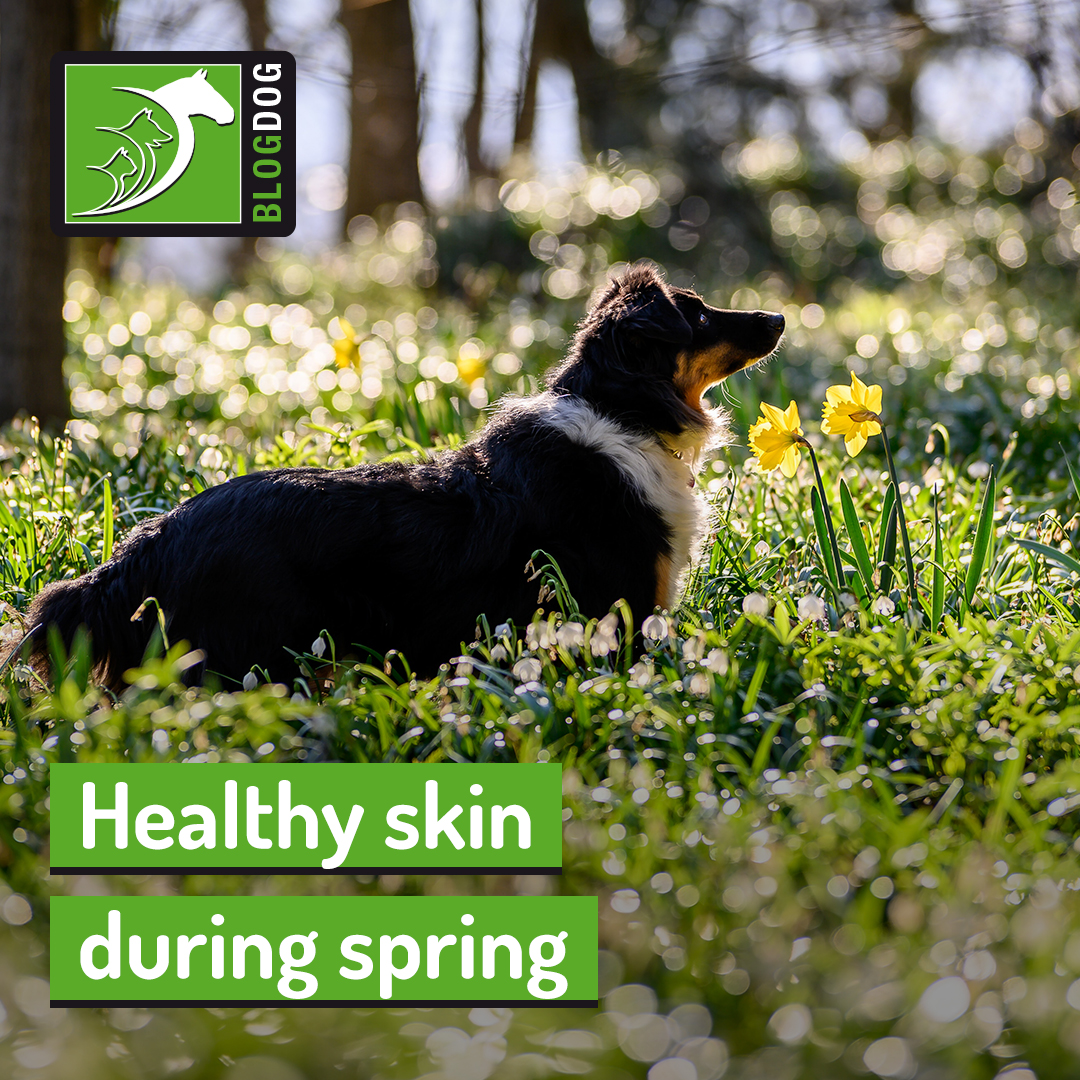
Healthy skin during spring

With the end of winter fast approaching, this is the perfect opportunity to plan some fun outdoor activities for spring!
Around this time of the year, you're also likely to see more dog hair around the house as your dogs shed their warm winter coat, so we've put together our top three tips to make sure that your dog's coat and skin are healthy this coming season.
#1: Grooming and bathing
Though grooming is an important step in your dog's hygiene routine all year round, it becomes particularly important during springtime.
As it removes dead hair from your dog's coat, grooming also helps prevent skin problems from occurring due to lack of skin aeration and accumulation of dead hair, cells, dirt and even moisture.
A periodic grooming routine will also allow you to detect any skin problems at an early stage, making them easier to treat.
As for bathing, it can also be useful in promoting a healthy coat and skin in dogs. But you might be wondering how often you should give your dog a bath as the weather starts to get warmer.
The truth is, this varies immensely depending on your dog's type of coat, lifestyle, and even health, as some skin conditions require medicated baths.
If at any moment you're unsure of what to do, don't hesitate to seek professional advice, be it from a certified groomer or your vet team.
#2: Parasite protection
With the weather getting warmer, parasite activity gradually increases, including external parasites, such as fleas and ticks, but worms and other internal parasites as well.
Though we are (unfortunately) used to dealing with these pesky creatures, it's important to keep in mind that parasites can have a significant impact on our pets' overall health.
Mosquitoes can transmit serious diseases such as leishmaniasis and ticks Lyme disease, for example, and other external parasites can cause severe cutaneous problems.
Take flea allergy dermatitis, for example. A single flea bite can lead to a disproportionate skin reaction, in which your dog will be so itchy that they can scratch, nibble and bite until the point of breaking the skin. And this is just with one flea bite!
If you're not sure that your dog's parasite treatments are up-to-date, our advice would be to give your vets a ring to check that they are protected.
#3: Heath check
For those of you who sneeze uncontrollably and have a stuffy nose for most of the spring, you're well aware of how uncomfortable and aggravating springtime allergies can be!
But did you know that spring allergens can be as bothersome to your pets as they are to you?
The thing is, instead of having a runny nose and congested upper airways, seasonal allergies usually manifest as itchy skin and skin lesions due to pets scratching and trying to find relief.
If you notice that your dog's skin looks red (particularly inside their ears), that they seem to be scratching a lot and rubbing their body against different types of surfaces or even people, or if you notice any skin lesions, book an appointment with your vet to figure out why they are so itchy.
We hope you have wonderful and safe adventures with your pets this spring!
Published: 09 Mar 2022
Read the previous article: Should I groom my cat?

